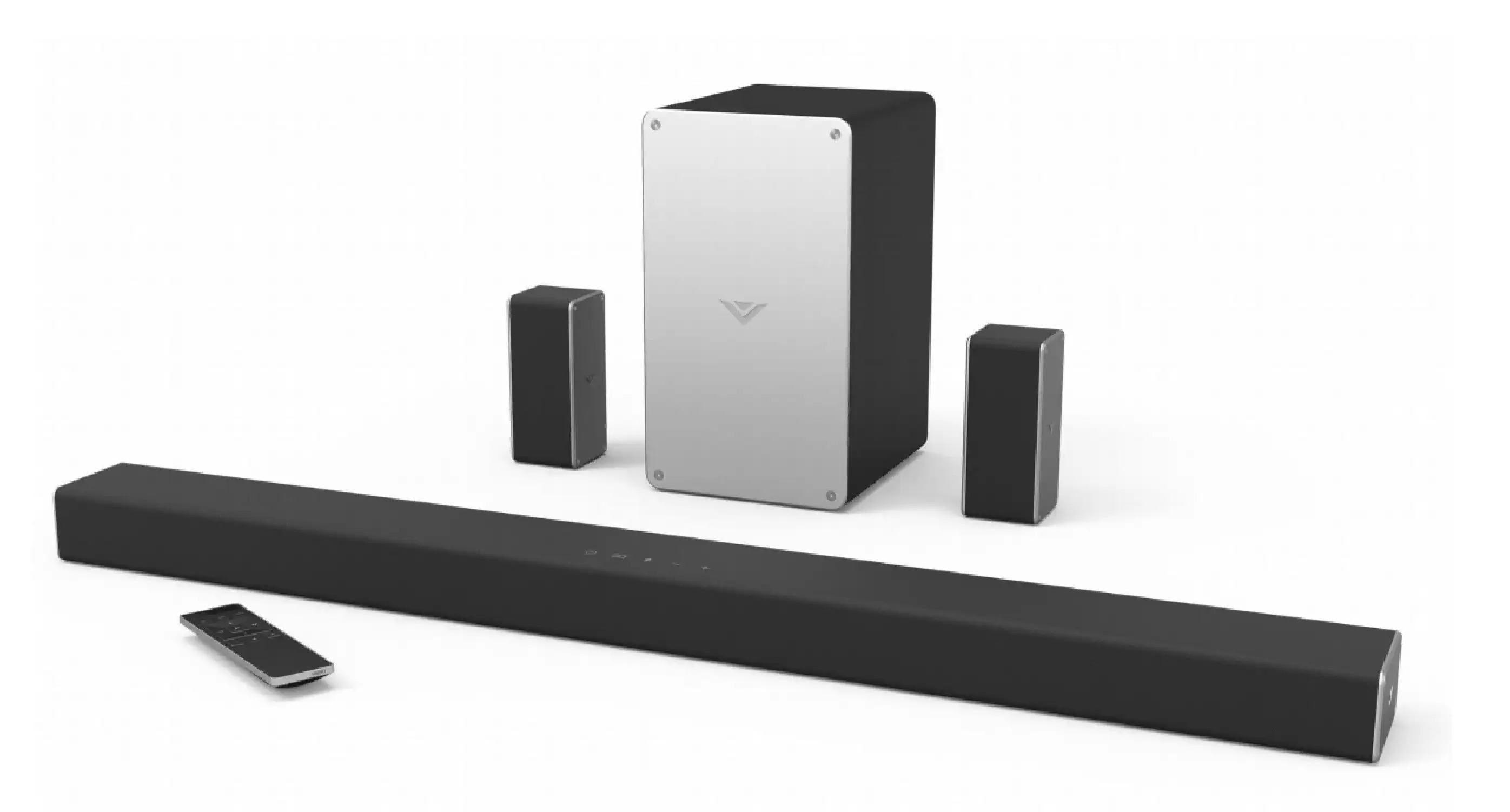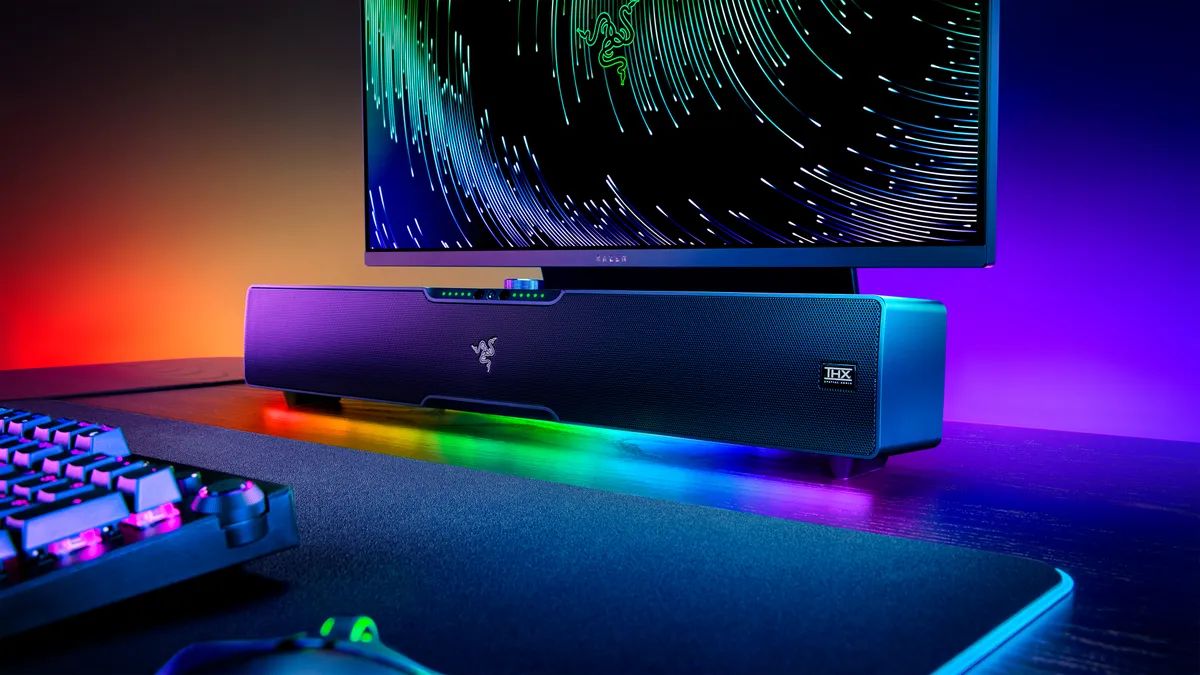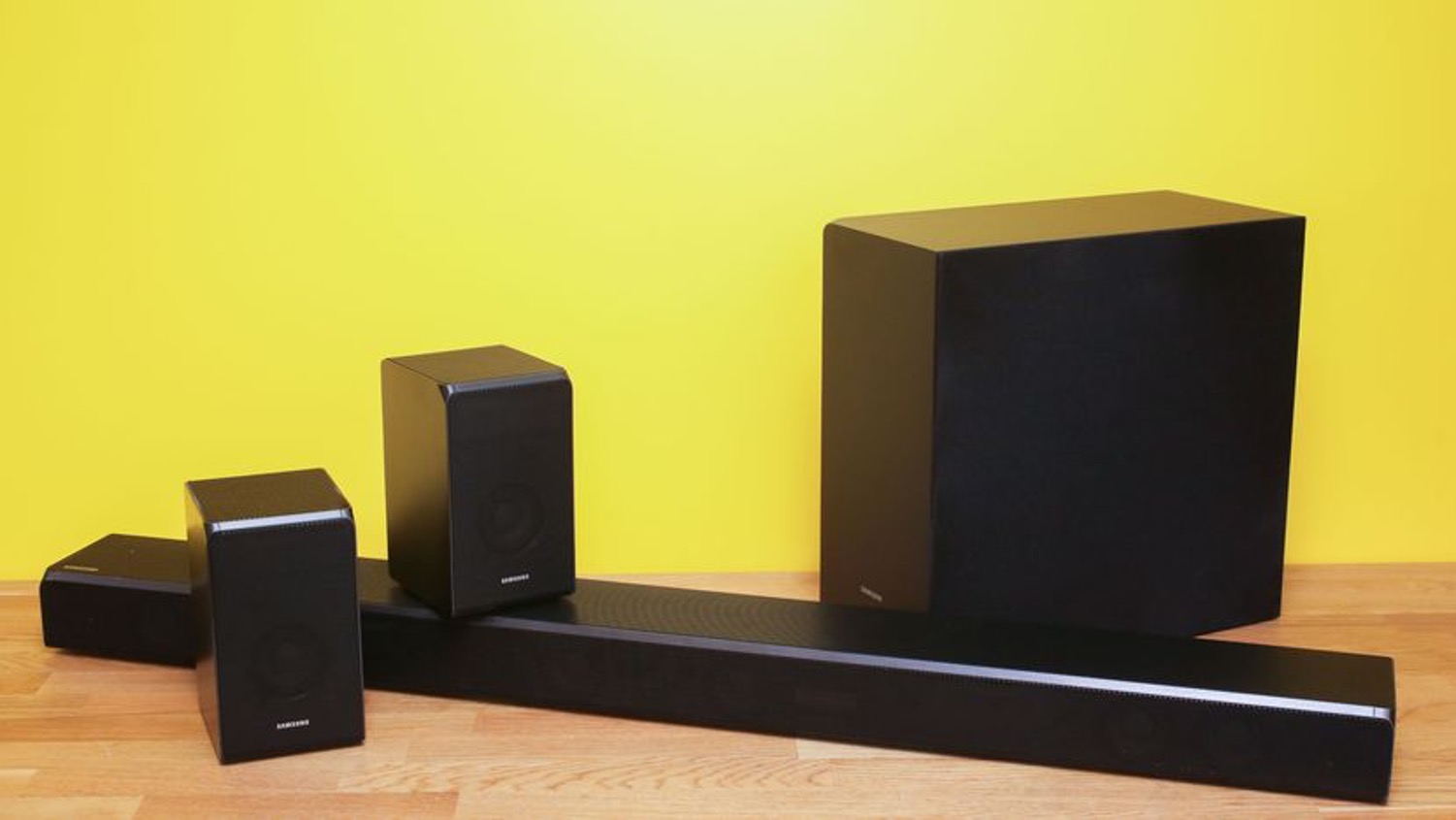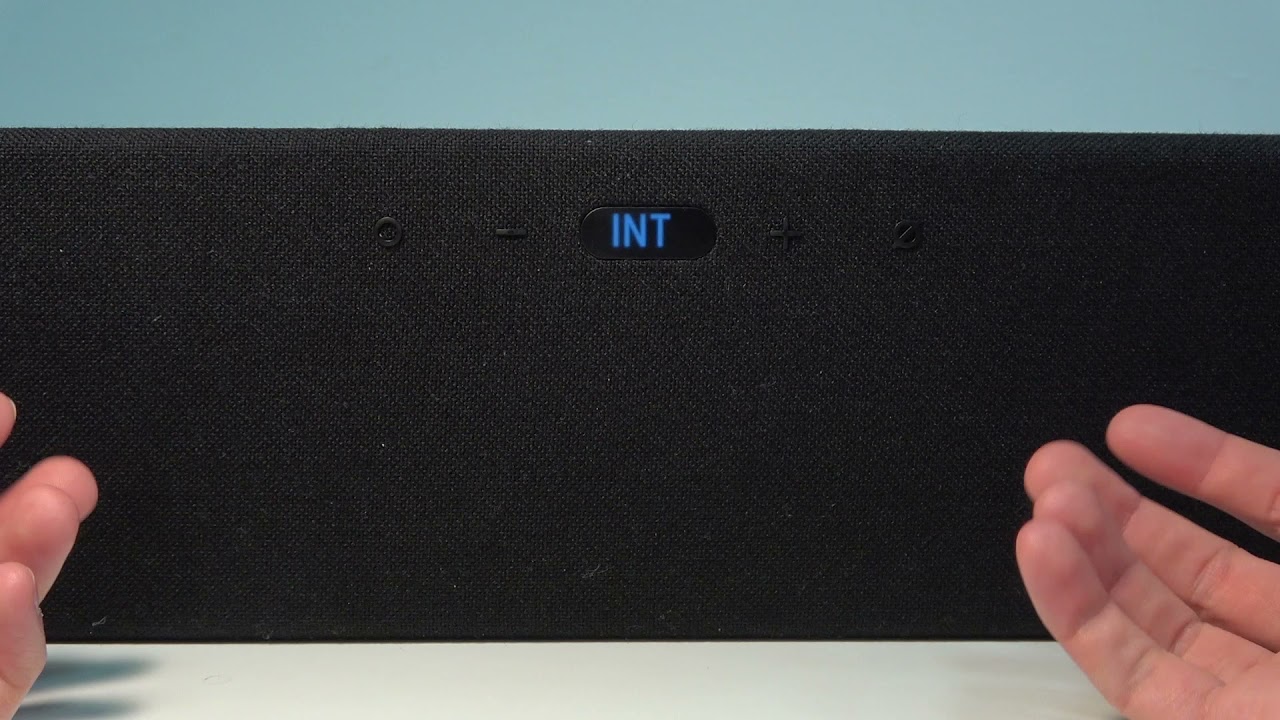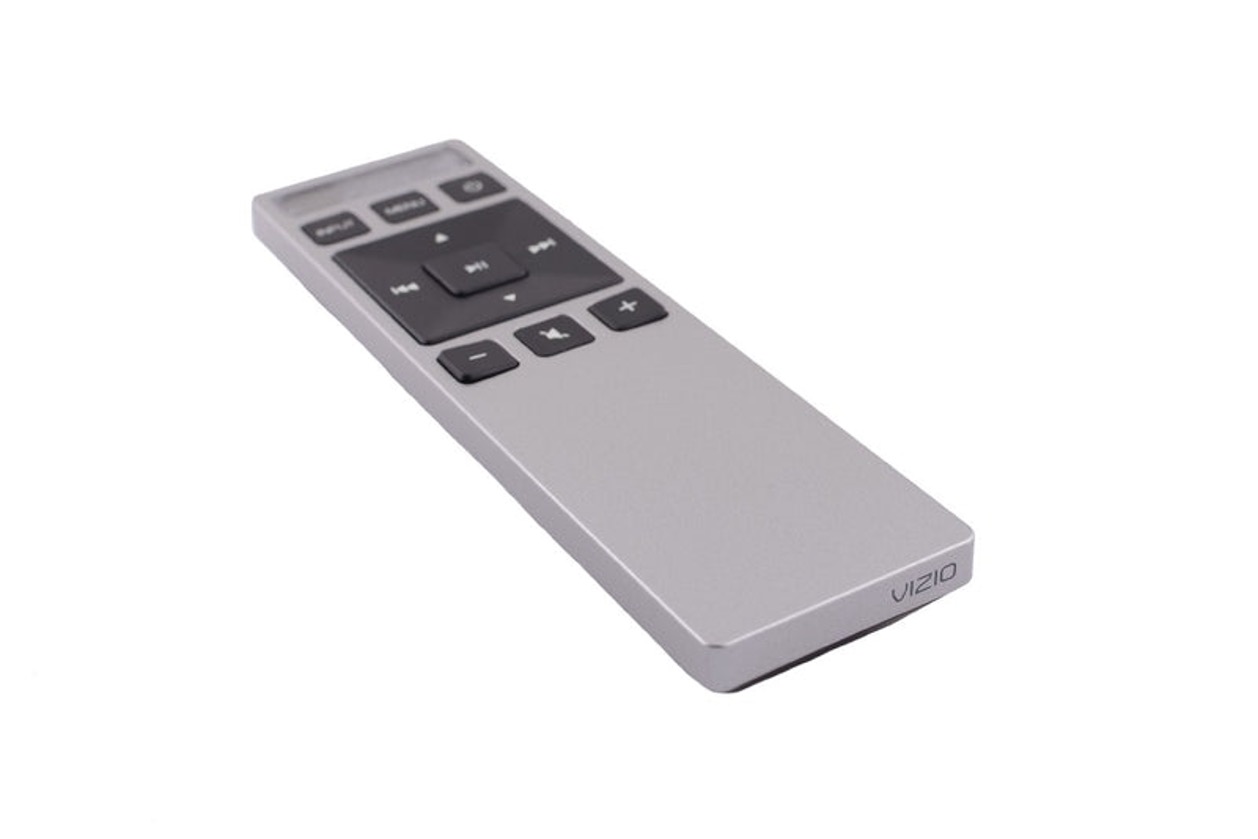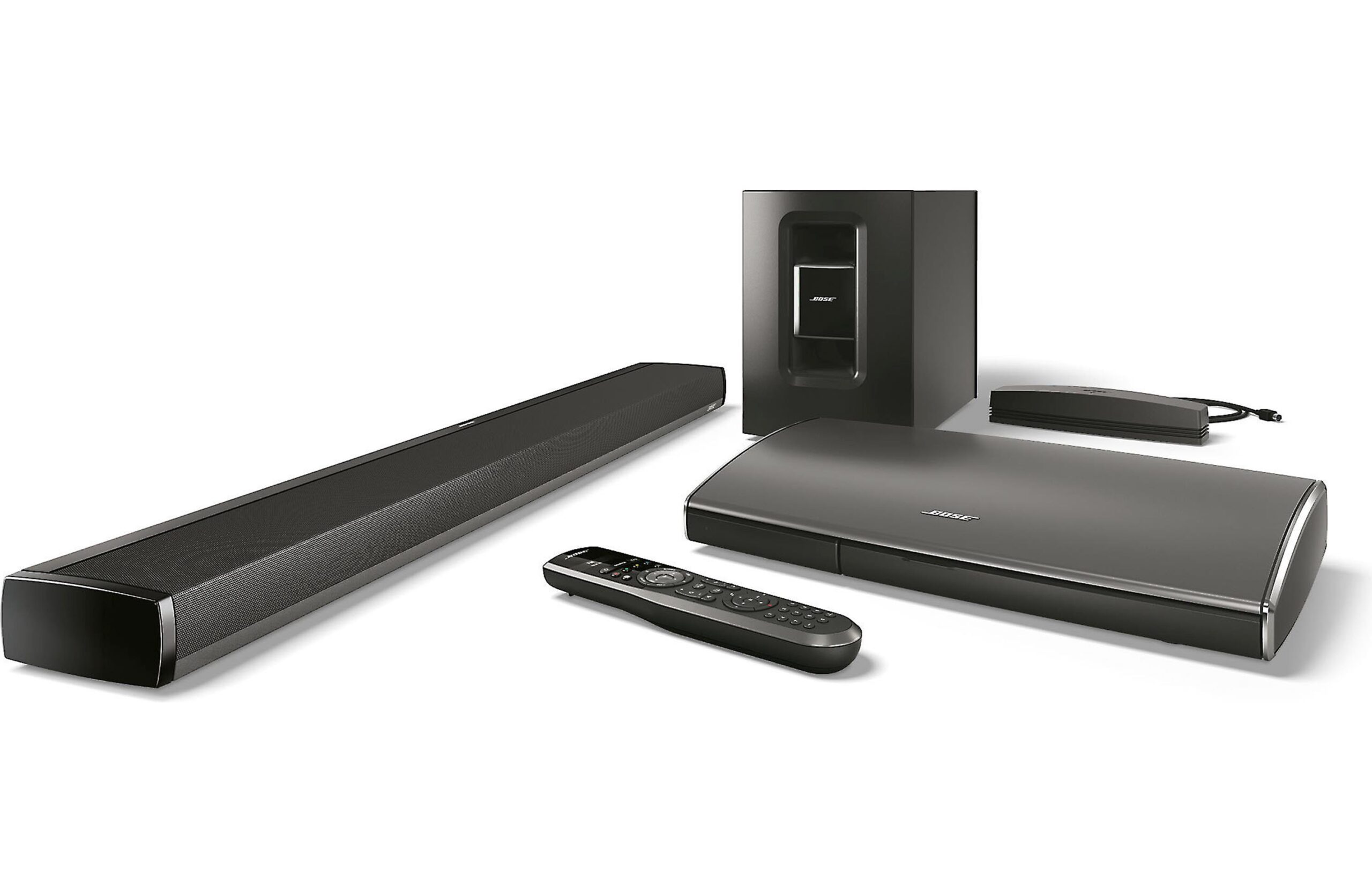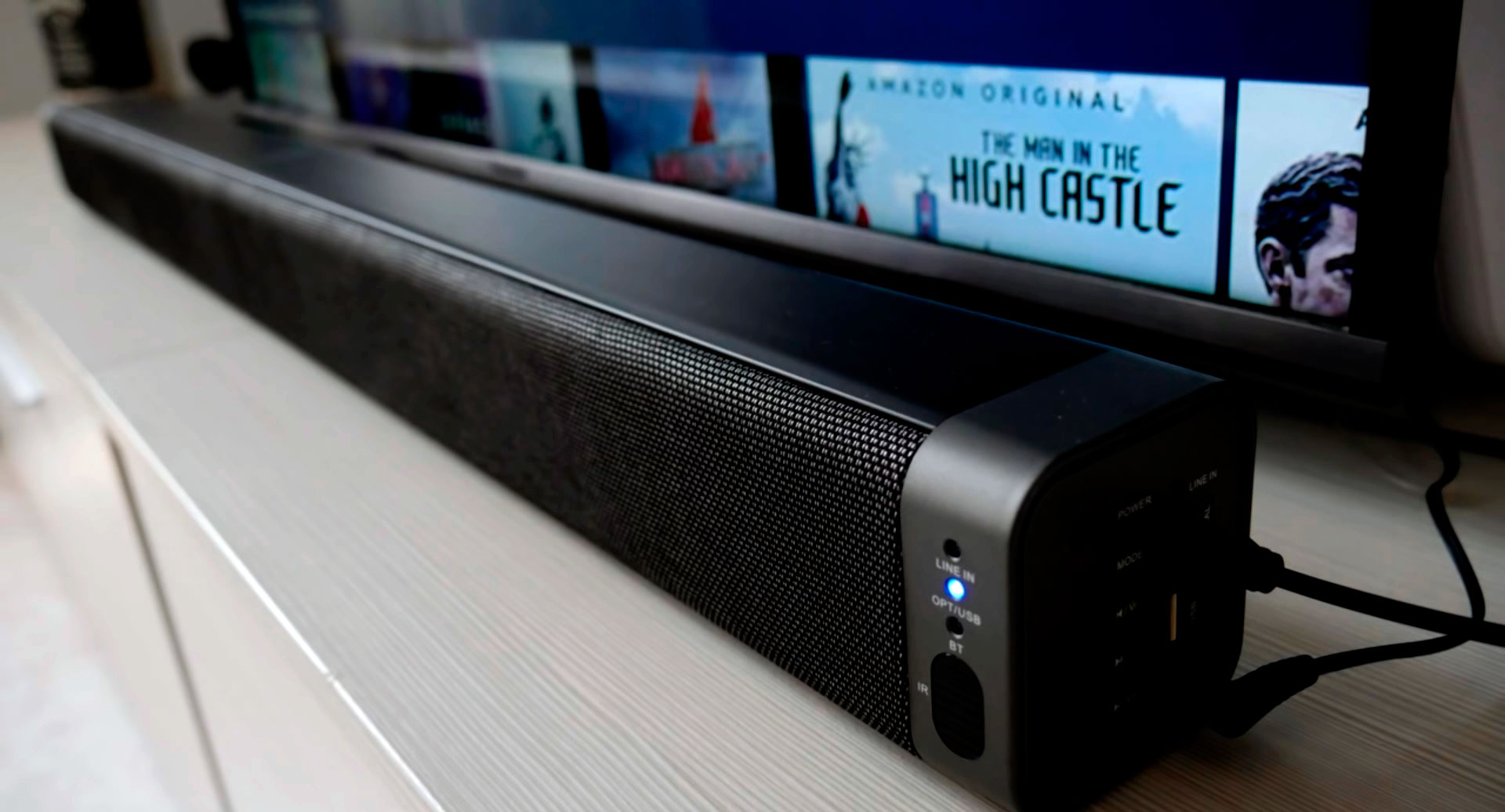Introduction
Having a soundbar enhances the audio experience of your entertainment system, providing clear and immersive sound. However, it can be frustrating when the volume goes up and down unexpectedly, disrupting your viewing or listening pleasure. Understanding the reasons behind this issue can help you troubleshoot and resolve it effectively.
The Role of Volume Modes
One of the main reasons why your soundbar volume fluctuates is due to the different volume modes it offers. Most soundbars have different modes such as “movie,” “music,” or “night” mode, each designed to optimize the sound performance based on the type of content you are enjoying. These modes may adjust the volume levels automatically to enhance certain aspects of the audio, such as dialogue clarity or bass response.
Automatic Volume Control
Another factor that can cause your soundbar volume to go up and down is automatic volume control. This feature, commonly found in soundbars, is designed to equalize the audio levels across different sources. It automatically adjusts the volume to compensate for variations in audio levels between channels or programs. This can prevent sudden loud bursts or quiet moments and provide a more consistent listening experience.
Dynamic Range Compression
Dynamic range compression is a feature that helps balance the difference between soft and loud sounds in audio. It reduces the dynamic range by compressing the audio, making both soft and loud sounds more consistent. This can be beneficial when watching movies or TV shows with a wide range of sound effects, preventing excessively loud sounds while preserving the details in quieter moments. However, it can also contribute to volume fluctuations if not properly set up or adjusted.
Audio Processing Issues
In some cases, volume fluctuations may be caused by audio processing issues. Soundbars process audio signals to optimize sound quality and deliver an immersive experience. However, if there are issues with the internal audio processing algorithms or hardware, it can result in inconsistent volume levels. Updating the soundbar’s firmware or checking for audio processing settings can help mitigate these issues.
The Role of Volume Modes
When it comes to soundbars, one of the key features that enhance the audio experience is the availability of different volume modes. These modes serve specific purposes, such as optimizing sound quality for different types of content or providing a better listening experience in specific situations.
One common volume mode found on many soundbars is the “movie” mode. This mode is designed to enhance the audio when watching movies or TV shows, prioritizing the dialogue clarity and the impact of explosive action sequences. It may boost the midrange frequencies, making dialogue more pronounced and ensuring that the sound effects are impactful without overpowering the overall audio balance.
On the other hand, the “music” mode is tailored towards optimizing the sound quality for music playback. It emphasizes the low and high frequencies to create a more dynamic and immersive music listening experience. This mode is well-suited for music enthusiasts who want to enjoy their favorite songs with enhanced bass and crispness in the high-frequency range.
Some soundbars also offer a specific mode known as “night” mode or “quiet mode.” This mode is particularly useful when you want to watch content or listen to music at lower volume levels without sacrificing audio clarity. The night mode compresses the dynamic range of the sound, ensuring that the softer sounds are audible, while preventing sudden peaks or bursts of loud noise. This mode can be handy for late-night viewing or when you have sleeping family members or neighbors nearby.
It’s important to note that while these volume modes are designed to enhance your listening experience, they can also contribute to the volume fluctuations that you may encounter. The adjustments made in these modes can sometimes result in slight variations in volume levels, especially during sudden audio transitions or when switching between different content types. However, these variations are generally desirable as they are part of the intended optimization for the specific mode.
To make the most of the volume modes on your soundbar, it’s recommended to experiment and find the mode that suits your preferences and the type of content you are enjoying. Whether you’re immersing yourself in a blockbuster movie, grooving to your favorite tunes, or enjoying a late-night TV show, the volume modes can help tailor the sound to your liking and provide a more enjoyable audio experience.
Automatic Volume Control
Automatic volume control is a feature found in many soundbars that aims to provide a consistent sound experience across different sources or channels. It aims to address the issue of sudden volume fluctuations that can occur when switching between channels or different types of content. By automatically adjusting the volume levels, this feature ensures that you don’t have to constantly reach for the remote to compensate for variations in audio levels.
One of the primary benefits of automatic volume control is that it prevents excessively loud or soft sounds that can be jarring to the ears. For example, when watching TV shows or movies, there may be instances where the volume suddenly spikes during action-packed scenes or drops significantly during quiet dialogue moments. Automatic volume control works to even out these volume discrepancies, providing a more consistent and enjoyable listening experience.
This feature uses audio processing algorithms to analyze the audio signal and make adjustments in real-time. During loud scenes or high-energy moments, it may decrease the volume slightly to avoid any distortion or discomfort. Conversely, during quiet moments or low-energy scenes, it may increase the volume to ensure that dialogue or subtle audio details are not lost. By dynamically adjusting the volume according to the audio content, automatic volume control aims to optimize the sound experience across the board.
However, it’s important to note that automatic volume control can sometimes lead to unintended consequences. For example, in some cases, it may overcompensate for volume differences, resulting in a constant fluctuation between loud and soft sounds. This can be particularly noticeable when watching commercials, as they are often louder than regular programs. In such cases, you may need to manually adjust the volume or consider disabling the automatic volume control feature altogether.
To make the most of automatic volume control, it’s recommended to review the soundbar’s settings and adjust them according to your preferences. Many soundbars allow you to customize the sensitivity or intensity of the automatic volume control feature. By finding the right balance, you can ensure that the feature works seamlessly without causing excessive fluctuations in sound levels.
Overall, automatic volume control is designed to enhance the audio experience by providing a consistent sound level, regardless of the content being played. It eliminates the need for constant manual adjustments and ensures that you can enjoy your favorite shows, movies, or music without interruptions or sudden jumps in volume.
Dynamic Range Compression
Dynamic range compression is a feature commonly found in soundbars that helps balance the difference between soft and loud sounds in audio. It addresses the issue of significant volume variations by compressing the dynamic range of the audio, making both soft and loud sounds more consistent. This feature can have a significant impact on the overall listening experience, especially when watching movies or TV shows with a wide range of sound effects.
The dynamic range refers to the difference between the softest and loudest sounds in an audio signal. In many cases, movies or music tracks have a wide dynamic range to create a more immersive and dramatic experience. This means that there can be moments of whisper-quiet dialogue followed by explosive action sequences with intense sound effects. While this dynamic range can be ideal for cinematic purposes, it can also create challenges in maintaining a consistent volume level without causing discomfort.
Dynamic range compression works by reducing the gap between the softest and loudest sounds, effectively “compressing” the dynamic range. When enabled, this feature automatically adjusts the volume levels in real-time, making the softer sounds louder and reducing the peak volume of the louder sounds. By doing so, it minimizes the extreme volume differences, providing a more balanced and comfortable listening experience.
However, dynamic range compression comes with its own set of considerations. When applied too heavily, it can result in a loss of audio detail and a flattened perception of depth in the sound. This can take away from the intended impact of certain sound effects or music compositions. Conversely, if not properly set up or adjusted, it may not effectively address the extreme volume variations, leading to inconsistent volume levels.
It’s essential to find the right balance when utilizing dynamic range compression. Most soundbars allow you to adjust the intensity or threshold of the compression, so you can tailor it to your preferences. This customization ensures that you can enjoy a more consistent sound experience while still preserving the desired nuances and impact of the audio.
By using dynamic range compression, you can mitigate the volume fluctuations that often occur in content with a wide dynamic range. This feature ensures that you won’t be caught off guard by sudden loud bursts or struggle to hear the softer parts of the audio. It provides a more balanced and enjoyable sound experience, allowing you to immerse yourself in your favorite movies, shows, or music with optimum comfort.
Audio Processing Issues
Audio processing is a crucial aspect of soundbars that optimizes the audio signal to deliver high-quality sound. However, there are instances where audio processing issues can contribute to volume fluctuations, affecting the overall listening experience. Understanding and addressing these issues can help you overcome the challenges and enjoy consistent and balanced sound.
One possible cause of audio processing issues is outdated firmware. Just like any other electronic device, soundbars often receive firmware updates that address bugs, improve performance, and enhance compatibility. If your soundbar’s firmware is outdated, it may result in inconsistencies in volume levels and audio quality. Updating the firmware to the latest version, which can usually be done through the manufacturer’s website or the soundbar’s settings menu, can help resolve these issues.
Additionally, some soundbars offer various audio processing settings that allow customization to suit individual preferences. These settings might include equalizer controls, bass/treble adjustments, or sound enhancement features. If these settings are not properly configured, it can lead to imbalances in the volume levels across different frequencies or inaccurate audio reproduction. It’s important to review and adjust these settings to achieve a more accurate and balanced sound output.
Another potential audio processing issue is related to the quality of the audio signal being fed into the soundbar. If the source device or connection is flawed, it can result in intermittent volume fluctuations. For example, a loose or damaged cable can cause intermittent interruptions or inconsistencies in the audio signal, leading to fluctuations in volume levels. Ensuring that all connections are secure and using high-quality cables can help mitigate these issues.
Additionally, some soundbars employ various spatial audio processing technologies to create a wider soundstage or simulate surround sound. While these technologies can enhance the listening experience, they may introduce distortions or inconsistencies in volume levels if not properly calibrated. Reviewing the spatial audio settings and adjusting them according to your room’s acoustics and personal preferences can help overcome these issues.
Lastly, it’s worth noting that not all audio processing issues can be resolved through user adjustments. In some cases, the soundbar’s hardware or internal processing algorithms may have limitations or defects that contribute to volume fluctuations. In such instances, contacting the manufacturer’s customer support or seeking professional assistance may be necessary to address the underlying issues.
By being aware of potential audio processing issues and taking appropriate actions such as firmware updates, adjusting settings, and ensuring proper audio connections, you can troubleshoot and resolve volume fluctuations effectively. This ensures a consistent and enjoyable audio experience when using your soundbar.
Connectivity Problems
Connectivity problems can also contribute to volume fluctuations in soundbars. These issues may arise due to various factors, including faulty cables, incompatible devices, or wireless interference. Identifying and resolving connectivity problems is essential to ensure a stable audio signal and consistent volume levels.
One common connectivity issue is related to the cables used to connect the soundbar to the audio source, such as a TV, media player, or gaming console. If the cables are damaged, improperly connected, or of low quality, it can result in intermittent audio signal disruptions. These disruptions can cause volume fluctuations or even complete audio dropouts. To resolve this issue, check the cables for any visible damage, ensure they are securely connected to the appropriate ports, and consider replacing them with high-quality cables if necessary.
Another aspect to consider is compatibility between devices. Ensure that the audio source device and the soundbar are compatible in terms of supported audio formats and connections. For example, if the audio source outputs a signal that the soundbar cannot process properly, it may result in volume fluctuations or distortions. Refer to the user manuals or specifications of both the soundbar and the audio source device to ensure compatibility.
If you are using a wireless connection to transmit audio to the soundbar, wireless interference can be a potential culprit for volume fluctuations. Other electronic devices operating on similar frequencies, such as Wi-Fi routers or Bluetooth devices, can interfere with the wireless signal, causing audio interruptions or fluctuations. To minimize wireless interference, consider relocating these devices away from the soundbar and ensuring that the soundbar is positioned within optimal range of the wireless transmitter.
Additionally, it’s important to ensure that the soundbar is using the latest firmware, as firmware updates often include improvements to connectivity and audio performance. Check the manufacturer’s website or the soundbar’s settings menu for any available firmware updates and apply them accordingly.
If you have multiple audio devices connected to the soundbar, such as a TV, DVD player, or gaming console, it’s also worth double-checking the audio settings on these devices. In some cases, incorrect audio settings or conflicting settings between devices can result in unpredictable volume fluctuations. Ensure that the audio output settings on each device are properly configured and aligned with the capabilities of the soundbar.
By addressing connectivity problems, you can ensure a stable and consistent audio signal, minimizing volume fluctuations in your soundbar. Taking the necessary steps to check cables, ensure compatibility, reduce wireless interference, and keep firmware up to date can significantly improve the overall audio experience and eliminate connectivity-related volume issues.
Remote Control Issues
Remote control issues can be another cause of volume fluctuations in soundbars. Problems with the remote control itself or issues in the communication between the remote and the soundbar can lead to erratic volume adjustments and an inconsistent audio experience. Identifying and troubleshooting these remote control issues is essential to regain control over the soundbar’s volume.
The first step in addressing remote control issues is to ensure that the remote control is functioning properly. Check the batteries and replace them if they are low or depleted. Sometimes, weak batteries can cause unreliable communication between the remote and the soundbar, resulting in intermittent or delayed responses to volume commands. Make sure the remote control is clean and free from any debris or obstructions that may interfere with the signals.
If the remote control is in good working condition, but you are still experiencing volume fluctuations, it could be a signal communication issue between the remote control and the soundbar. Wireless interference or a weak signal can disrupt the communication, causing inconsistencies in volume adjustments. Ensure that there are no obstacles blocking the line of sight between the remote control and the soundbar, as this can interfere with the signal transmission. Consider moving any objects that may be obstructing the signal path.
Some soundbars also allow for remote control pairing or synchronization. If your soundbar offers this feature, refer to the user manual for instructions on how to pair the remote control with the soundbar. This ensures a secure and reliable communication link between the two devices, reducing the chances of signal interference or disruptions that may lead to volume fluctuations.
If none of these measures resolve the remote control issues, there may be a more significant problem with the soundbar’s remote receiver or the soundbar itself. Contact the manufacturer’s customer support for further assistance or consider having a professional examine the soundbar to determine if repairs or replacements are necessary.
In the meantime, if you’re still experiencing volume fluctuations due to remote control issues, you can consider using alternative methods to adjust the volume. Many soundbars offer manual volume control buttons on the unit itself, allowing you to directly adjust the volume without relying on the remote control. You can also explore the option of using the volume control features on the audio source device, such as your TV or media player, if they are connected to the soundbar.
By troubleshooting remote control issues and ensuring a reliable communication link between the remote control and the soundbar, you can regain control over the volume adjustments and ensure a consistent audio experience.
Troubleshooting Tips
If you’re experiencing volume fluctuations with your soundbar, there are several troubleshooting tips you can try to identify and resolve the issue. By following these steps, you can narrow down the potential causes and find a solution that restores consistent and balanced volume levels.
1. Check the audio source: Ensure that the audio source device, such as your TV or media player, is not causing the volume fluctuations. Test the soundbar with different sources to see if the issue persists. If it does, the problem is likely related to the soundbar itself.
2. Update firmware: Check for any available firmware updates for your soundbar. Manufacturers often release updates that address bugs, improve performance, and enhance compatibility. Updating the firmware can potentially fix volume fluctuation issues.
3. Adjust volume modes: Experiment with different volume modes on your soundbar, such as “movie,” “music,” or “night” mode. Find the mode that provides a more balanced and consistent volume level for your preferred content.
4. Disable automatic volume control: If you find that the automatic volume control feature is causing unwanted fluctuations, consider disabling it. Refer to your soundbar’s settings menu to make adjustments or consult the user manual for guidance.
5. Customize dynamic range compression: If your soundbar offers dynamic range compression settings, adjust the intensity or threshold to find the right balance. Fine-tuning this feature can help to prevent excessive volume differences between soft and loud sounds.
6. Check audio connections: Ensure all audio connections are secure and free from damage. Faulty cables or loose connections can cause intermittent volume fluctuations. Consider using high-quality cables to minimize audio signal disruptions.
7. Minimize wireless interference: If your soundbar uses a wireless connection, keep it away from devices that may cause interference like Wi-Fi routers or Bluetooth devices. Relocating these devices or the soundbar can help reduce wireless interference and improve signal stability.
8. Optical setup considerations: If you’re using an optical connection, make sure that the settings on both the soundbar and the audio source are configured correctly. Some TVs may have separate volume control settings for different audio outputs, so ensure that the appropriate output is selected and properly adjusted.
9. Reset the soundbar: If other troubleshooting steps haven’t resolved the issue, try performing a factory reset on your soundbar. Keep in mind that this will reset all settings to their default values, so you’ll need to reconfigure your preferences afterward.
10. Seek professional assistance: If none of the troubleshooting tips work, or if you suspect a hardware issue with your soundbar, it may be best to contact the manufacturer’s customer support or consult a professional technician for further assistance and possible repairs.
By following these troubleshooting tips, you can pinpoint the cause of volume fluctuations and take appropriate steps to resolve the issue. Ensuring a consistent and balanced volume level will enhance your overall audio experience and allow you to fully enjoy your soundbar.
Conclusion
Volume fluctuations in soundbars can be a frustrating experience, but understanding the various factors that contribute to this issue and implementing the appropriate troubleshooting steps can help resolve the problem. By considering the role of volume modes, automatic volume control, dynamic range compression, audio processing, connectivity, and remote control issues, you can effectively address volume fluctuations and maintain a consistent and enjoyable audio experience.
It’s essential to experiment with different volume modes and adjust the settings to suit your preferences and the content you are enjoying. By finding the right balance, you can optimize the sound output and minimize volume discrepancies. If automatic volume control is causing unwanted fluctuations, consider disabling or adjusting it to achieve a more consistent sound level.
Dynamic range compression can be useful in balancing soft and loud sounds, but it’s important to find the right intensity to preserve audio detail and maintain a natural sound experience. Keep firmware updated and ensure that audio processing settings are properly configured to maximize the soundbar’s performance.
Connectivity problems, including cable issues, compatibility checks, and wireless interference, should be addressed to ensure a stable audio signal. Troubleshooting remote control issues, such as battery checks, signal communication, and pairing, can help regain control over volume adjustments.
By following the troubleshooting tips provided, you can identify and resolve volume fluctuations in your soundbar. However, if the issue persists or there are hardware-related concerns, it may be necessary to seek professional assistance or contact the manufacturer’s customer support.
Remember, the ultimate goal is to achieve a balanced and consistent volume level that enhances your audio experience. By being proactive and addressing the factors contributing to volume fluctuations, you can optimize your soundbar’s performance and enjoy immersive sound without interruptions or unexpected volume changes.







